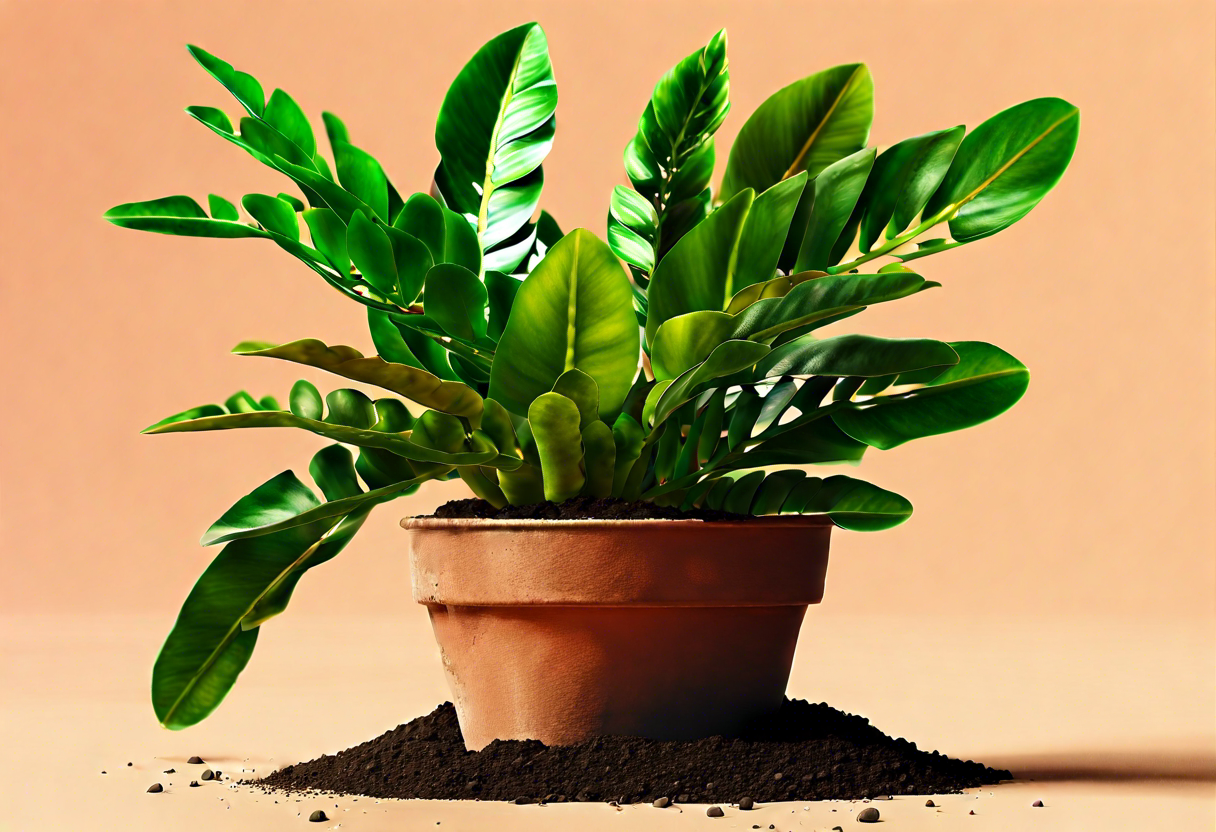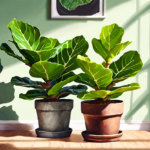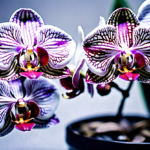Factors to Consider When Choosing Soil for ZZ Plants
Factors to Consider When Choosing Soil for ZZ Plants
When it comes to keeping your ZZ Plants (Zamioculcas zamiifolia) thriving, one of the most important factors to consider is the type of soil or potting mix you use. The right soil composition is crucial for the overall health and well-being of your ZZ Plants. In this article, we will explore the key factors to consider when choosing the best soil or potting mix for your ZZ Plants.
1. Drainage: The key to a healthy ZZ Plant is proper drainage. ZZ Plants like their soil to be kept slightly moist but not excessively wet. So, it’s important to choose a soil mix that allows excess water to drain freely. Look for a soil mix that is well-draining and has good aeration. This will prevent the roots from sitting in water, which can lead to root rot and other issues.
2. Water Retention: While good drainage is important, it’s also essential to choose a soil mix that retains some moisture. ZZ Plants prefer a soil mix that offers a good balance between drainage and water retention. This will ensure that the roots have access to the moisture they need, without becoming waterlogged. Look for a soil mix that contains a combination of organic matter, such as peat moss or coconut coir, and perlite or vermiculite to help retain moisture.
3. Nutrient Content: ZZ Plants are relatively low-maintenance when it comes to fertilization. However, they still require some essential nutrients to thrive. When choosing a soil mix, opt for one that is rich in organic matter and contains slow-release fertilizers. Organic matter provides additional nutrients for the plant over time, while slow-release fertilizers ensure a steady supply of nutrients. Avoid using heavy, nutrient-rich soils as they can lead to over-fertilization, which can damage the plant.
4. pH Level: ZZ Plants prefer slightly acidic to neutral soil conditions, with a pH level between 6 and 7. To ensure optimal growth, choose a soil mix that is pH balanced. You can use a pH testing kit to check the acidity or alkalinity of the soil before potting your ZZ Plant.
5. Sterility: ZZ Plants are susceptible to root rot and other diseases caused by fungal and bacterial infections. To prevent these issues, it’s important to choose a soil mix that is sterile. Avoid using garden soil or soil mixes that contain unsterilized components. Instead, opt for commercially prepared potting mixes that are labeled as sterilized.
6. Aeration: Adequate airflow to the roots is crucial for the health of ZZ Plants. Choose a soil mix that provides good aeration, allowing oxygen to reach the roots. This will promote healthy root growth and prevent issues such as root suffocation. Look for a soil mix that contains perlite or pumice, which helps improve aeration.
Remember, the quality of the soil or potting mix you choose can greatly impact the overall health and growth of your ZZ Plants. By considering these factors and selecting a well-balanced soil mix, you can create the perfect environment for your ZZ Plants to thrive.
Organic vs. Synthetic Potting Mix: Which is Better for ZZ Plants?
When it comes to choosing the best soil or potting mix for ZZ plants, gardeners often find themselves debating between organic and synthetic options. Both types have their pros and cons, so it’s important to consider the specific needs of the ZZ plant (Zamioculcas zamiifolia) before making a decision.
Organic potting mixes are made from natural materials such as peat moss, compost, and coconut coir. They are rich in organic matter and provide a more sustainable and eco-friendly option for gardening. One of the main advantages of organic potting mixes is their ability to improve soil structure and fertility over time. These mixes promote healthy root growth, moisture retention, and nutrient availability, all of which are essential for the well-being of ZZ plants.
On the other hand, synthetic potting mixes are manufactured and typically consist of a blend of peat moss, perlite, vermiculite, and various chemicals to create a balanced growing medium. Synthetic mixes are known for their consistent texture, which allows for good drainage and aeration. They also provide specific nutrient ratios that can be tailored to meet the needs of ZZ plants. Additionally, synthetic mixes are often pathogen-free, reducing the risk of diseases and pests.
When deciding between organic and synthetic potting mixes for ZZ plants, the key is to find a balance that suits your gardening style and the plant’s requirements. Organic potting mixes can be more forgiving and provide a buffer against overwatering, while synthetic mixes offer precise control over nutrient levels. Some gardeners prefer organic mixes for their sustainable nature, while others favor synthetic mixes for their consistency and precision.
It’s important to note that the type of potting mix alone is not the sole factor in the success of ZZ plants. Proper watering, light conditions, and regular fertilization also play crucial roles in their overall health. Additionally, ZZ plants are known for their tolerance to a wide range of soil conditions, making them fairly adaptable.
Both organic and synthetic potting mixes have their own merits. Organic potting mixes promote soil fertility and can improve the long-term health of ZZ plants. Synthetic potting mixes offer precise control over nutrient levels and enhanced drainage. Ultimately, the choice between organic and synthetic potting mixes depends on personal preferences and the specific needs of your ZZ plant. Regardless of the choice, providing the right potting mix will contribute to the overall growth and well-being of your ZZ plant.
Factors to Consider When Choosing Soil for ZZ Plants
Best Soil or Potting Mix for ZZ Plant (Zamioculcas zamiifolia)
When it comes to the health and thriving of your ZZ plant (Zamioculcas zamiifolia), choosing the right soil or potting mix is crucial. The soil plays a vital role in supplying the plant with the necessary nutrients, moisture, and oxygen it needs to grow and flourish. Here are some factors to consider when choosing the best soil or potting mix for your ZZ plant.
1. Well-Draining Soil
One of the most important factors to consider is the drainage capacity of the soil. ZZ plants prefer slightly moist soil but can suffer from root rot if overwatered or if the soil doesn’t drain well. Look for a potting mix that is well-draining and allows excess water to flow through easily. Ideally, the soil should hold moisture without becoming waterlogged.
2. Lightweight and Porous Mix
ZZ plants have delicate tuberous roots and prefer a potting mix that is lightweight and porous. A mix that is too heavy can compact and prevent proper air circulation to the roots. Look for a mix that contains ingredients like peat moss, perlite, or vermiculite, which provide good aeration and drainage while retaining some moisture.
3. Nutrient-Rich Soil
ZZ plants are known for their ability to thrive in a wide range of conditions, including low nutrient availability. However, providing a nutrient-rich soil can help your plant grow healthier and reach its full potential. Look for a potting mix that includes organic matter such as compost or well-rotted manure to supply essential nutrients to the plant.
4. pH Balance
ZZ plants prefer a slightly acidic to neutral soil pH ranging from 6.0 to 7.0. It’s important to choose a potting mix that has a pH within this range to ensure optimal nutrient uptake by the plant. A pH meter or test kit can help you determine the acidity or alkalinity of the soil.
5. Pre-Packaged Potting Mixes
If you prefer convenience, pre-packaged potting mixes specifically formulated for houseplants like ZZ plants are readily available in garden centers or online. These mixes are designed to meet the specific needs of the plant and often contain a balanced blend of the necessary ingredients.
The best soil or potting mix for ZZ plants should be well-draining, lightweight, and porous to promote proper air circulation and prevent root rot. It should also be nutrient-rich and have a pH within the slightly acidic to neutral range. Whether you choose a pre-packaged mix or create your own DIY mix, providing the right soil will greatly contribute to the overall health and vitality of your ZZ plant.
Common Mistakes When Potting ZZ Plants
When it comes to potting ZZ plants (Zamioculcas zamiifolia), it’s important to avoid certain common mistakes that can hinder their growth and overall health. By being aware of these pitfalls, you can ensure that your ZZ plant thrives in its new potting mix. Here are some mistakes to avoid:
Neglecting Drainage: One of the most critical mistakes you can make when potting ZZ plants is not providing adequate drainage. These plants are susceptible to root rot if their roots are constantly sitting in water. To ensure proper drainage, choose a pot with drainage holes and use a well-draining potting mix.
Using the Wrong Potting Mix: Another mistake is using the wrong type of potting mix for your ZZ plant. These plants prefer a well-draining mix that allows water to flow through easily. Avoid heavy soils or ones that retain too much moisture, as this can lead to root rot. Instead, opt for a mixture that combines ingredients such as perlite, sand, and peat moss, which provide both aeration and moisture retention.
Overwatering: ZZ plants are known for their ability to tolerate periods of drought. Overwatering is a common mistake that can lead to root rot and ultimately the death of the plant. It’s important to allow the soil to dry out partially between watering sessions. Stick your finger into the soil; if it feels dry an inch below the surface, it’s time to water. Otherwise, wait until it dries out a bit more.
Underwatering: While overwatering can be detrimental, underwatering can also cause issues. ZZ plants still require regular watering, but they prefer a more moderate approach. Ensure that the potting mix is evenly moist during the growing season, but avoid waterlogging the soil.
Using Old or Contaminated Soil: Reusing old potting soil or using contaminated soil can introduce pests or diseases to your ZZ plant. It’s best to start with fresh, sterile soil whenever repotting your plant. This reduces the risk of introducing any harmful organisms that can harm the plant’s health.
Choosing an Improper Pot Size: Selecting the right pot size is essential for the health of your ZZ plant. A pot that is too small can constrict the roots, leading to stunted growth. On the other hand, a pot that is too large can cause the soil to retain excess moisture, increasing the risk of root rot. Choose a pot that provides enough room for the roots to grow, with a diameter that is roughly 1-2 inches larger than the previous pot.
When potting ZZ plants, it’s important to avoid mistakes such as neglecting drainage, using the wrong potting mix, overwatering or underwatering, using old or contaminated soil, and choosing an improper pot size. By being mindful of these common pitfalls, you can ensure that your ZZ plant thrives and remains healthy in its new potting mix.
How to Create Your Own DIY Potting Mix for ZZ Plants
Creating your own DIY potting mix for ZZ plants is a great way to ensure that your plant is getting the best soil possible. By customizing the mix to suit the specific needs of Zamioculcas zamiifolia, you can provide optimal conditions for growth and health. Here’s a step-by-step guide on how to create the perfect potting mix for your ZZ plant:
Step 1: Gather the Ingredients
The first step in creating a DIY potting mix for ZZ plants is gathering all the necessary ingredients. You will need perlite, peat moss, vermiculite, and a well-balanced organic fertilizer. These components will provide the necessary nutrients and drainage for your plant.
Step 2: Mix the Ingredients
Next, it’s time to mix the ingredients together. Start by combining equal parts perlite, peat moss, and vermiculite in a large container. This mixture will provide the necessary aeration and moisture retention for your ZZ plant’s roots.
Step 3: Add Organic Fertilizer
Once the basic mixture is combined, it’s time to add the organic fertilizer. Choose a well-balanced fertilizer that is specifically formulated for houseplants. Follow the instructions on the packaging to determine the appropriate amount of fertilizer to add to your mix.
Step 4: Blend Well
After adding the organic fertilizer, blend the mixture well to ensure that all the components are evenly distributed. This will help provide a consistent nutrient profile throughout the potting mix.
Step 5: Moisture Test
Before planting your ZZ plant, perform a moisture test on the potting mix. Take a handful of the mixture and squeeze it tightly in your hand. If it holds its shape and feels slightly moist, it’s ready to use. If it crumbles easily, it may be too dry and will require additional moisture.
Step 6: Plant Your ZZ Plant
Now that your DIY potting mix is ready, it’s time to plant your ZZ plant. Choose a pot with drainage holes to ensure proper water flow. Gently remove the plant from its current pot and place it in the new container, filling it with the potting mix until the roots are covered. Firmly press the soil around the base of the plant.
Step 7: Water and Monitor
After planting, water the ZZ plant thoroughly until the excess water drains out of the pot. Place the plant in a location with bright indirect light and monitor its moisture levels regularly. ZZ plants prefer slightly dry conditions, so be careful not to overwater.
Creating your own DIY potting mix for ZZ plants allows you to provide the ideal soil conditions for optimal growth and health. By following these steps and customizing the mix to suit the needs of your Zamioculcas zamiifolia, you can ensure a thriving and beautiful plant.
Conclusion
Choosing the best soil or potting mix for ZZ plants (Zamioculcas zamiifolia) is essential for their growth and overall health. Several factors need to be considered when selecting the right soil, including moisture retention, nutrient content, and drainage capabilities. Organic potting mix, made from natural materials such as compost and peat moss, is often preferred over synthetic mixtures due to its ability to improve soil structure and supply essential nutrients. However, synthetic mixes can be advantageous for those who prefer a more controlled nutrient balance.
Drainage plays a crucial role in the health of ZZ plants. Excess water can lead to root rot and other fungal diseases, so it is important to choose a potting mix that allows for proper drainage. Organic potting mixes, with their looser structure, tend to provide better drainage, while synthetic mixes may require the addition of perlite or sand to improve water flow. Ensuring that excess water can easily escape the pot will help prevent waterlogging and promote healthy root growth.
Several common mistakes should be avoided when potting ZZ plants. Overwatering is one of the most common errors, as the ZZ plant prefers to dry out between waterings. Waiting until the soil is mostly dry before watering again will help prevent root rot and other moisture-related issues. Another common mistake is using soil that is too compact, which can lead to poor drainage and limited root development. It is essential to choose a potting mix that provides a loose and well-draining environment.
For those who prefer a more hands-on approach, creating your own DIY potting mix can be a rewarding and cost-effective option. A simple recipe includes equal parts peat moss, perlite, and a well-balanced organic compost. This mixture provides excellent drainage and nutrient retention, promoting healthy growth for your ZZ plants. Adding a slow-release fertilizer can also help ensure a steady supply of nutrients over time. DIY potting mixes allow for customization and the addition of specific ingredients to meet the unique needs of your ZZ plants.
Selecting the best soil or potting mix for ZZ plants requires consideration of several factors. Organic potting mixes offer nutrient-rich and well-draining options, while synthetic mixes provide greater control over nutrient balance. Adequate drainage is crucial to prevent root rot and fungal diseases. Avoiding common mistakes such as overwatering and using compact soil will help maintain the health of your ZZ plants. For those who prefer a personalized touch, creating a DIY potting mix can be an excellent option. By following these guidelines, you can provide your ZZ plants with the optimal growing conditions they need to thrive.


